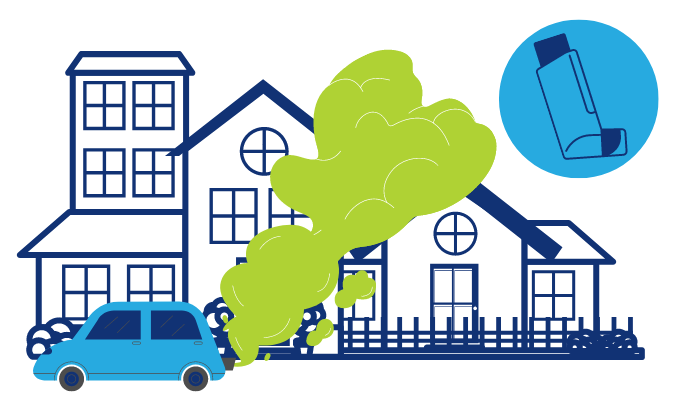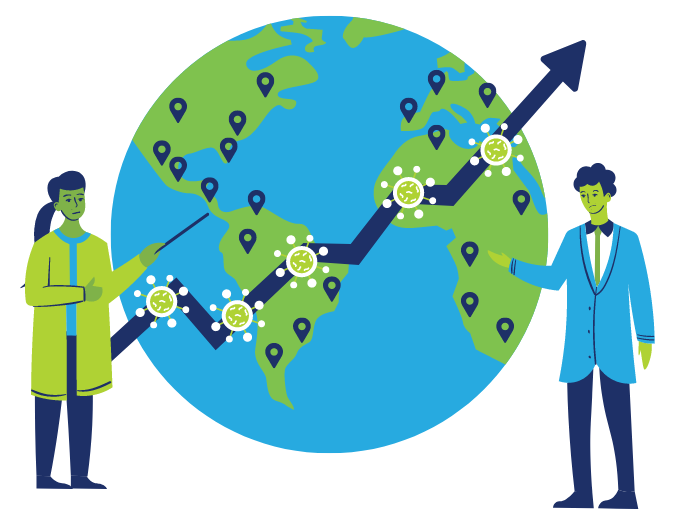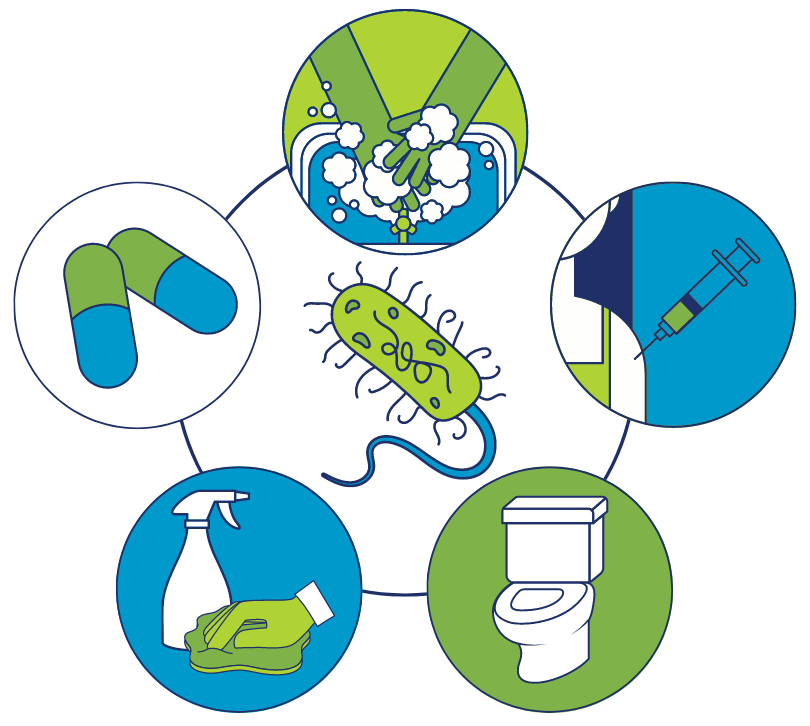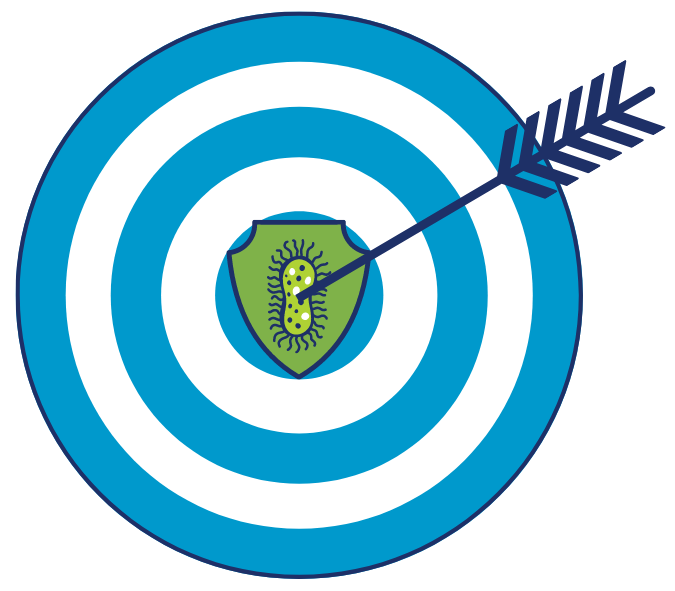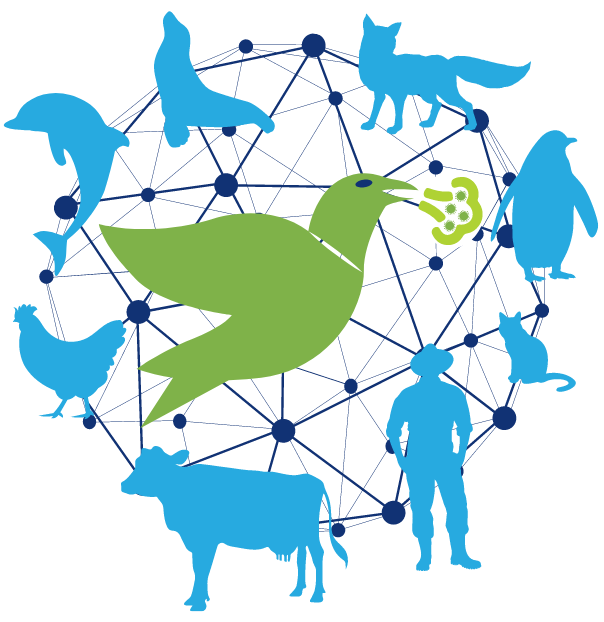
Bird flu – aka avian influenza – is doing what it does best yet again – surprising scientists, public health officials, farmers, and wildlife experts. It’s been spreading among dairy cattle in the United States, something that startles even long-term observers of the virus.
The H5N1 strain of avian influenza was first noticed in the late 1990s and it immediately worried experts, who saw its potential to cause a pandemic. It infects many wild birds without causing them too much trouble, but they can spread it to domestic poultry, which often die en masse. It has occasionally spread to people – just under 900 since 2003 – according to the World Health Organization. But it’s deadly when it does, killing half of these people.
It’s a perfect One Health issue – a disease that circulates among animals, spreads from one species to another, and then makes the jump to people. Farming practices, climate change, and the environment all play a role. Now it’s shown up in Antarctica, and at least one person on a dairy farm has been infected.
That surprised Dr. Richard Webby, Director of the World Health Organization Collaborating Centre for Studies on the Ecology of Influenza in Animals and Birds at St. Jude Children’s Research Hospital in Memphis, Tennessee. He says H5N1, like so many flu viruses, is constantly changing and evolving. That’s why it’s so important to keep an eye on it. “If there is one virus I don’t want to catch, this is it,” he says.
Listen as Dr. Webby tells One World, One Health about what experts are working to find out about H5N1’s latest moves.
Maggie Fox 00:00
Hello and welcome to One World, One Health where we take a look at some of the biggest problems facing our world. I’m Maggie Fox. This podcast is brought to you by the One Health Trust with bite-sized insights into ways to help address challenges, such as infectious diseases, climate change, and pollution. We take a One Health approach that recognizes that everything on this planet — the animals, plants and people, and the climate and environment — are all linked.
Flu never fails to surprise us! Every few years, a whole new variant of flu pops up and gradually adds itself to the mix of different flu viruses that infect people and animals to varying degrees. The latest surprises come from H5N1, avian influenza or bird flu. It’s been spreading among new animals and in new places, including in Antarctica, and now among dairy cattle in the US, and then it appears to have infected someone who was in contact with these milk cows.
Dr. Richard Webby is an expert on the interspecies transfer of viruses — when a virus passes from one species to another. He’s been watching H5N1 for decades now. Dr. Webby is the director of the World Health Organization Collaborating Center for Studies on the Ecology of Influenza in Animals and Birds at St. Jude’s Children’s Research Hospital in Memphis, Tennessee. His center is also designated as the Center of Excellence in influenza research and surveillance by the US National Institutes of Health. He’s one of the world’s top experts on the weirdness of flu. And he’s here to chat about what H5N1 is up to.
Richard, thank you so much for joining us.
Richard Webby 01:44
Oh, thanks, Maggie. It’s a pleasure.
Maggie Fox 01:48
How surprised were you when you learned that H5N1 had been found among dairy cattle in the US?
Richard Webby 01:53
Yeah. So maybe this is going to destroy everything you just said about how much of an expert I am, because I could have sworn that this virus was not going to turn up in cows. So, from that perspective, yeah, that it’s a really surprising event for me, perhaps not as surprised as I should have been. Yeah, there have been a few reports over the years of hints that maybe cows have been infected with flu viruses, but this was a surprise to me.
Maggie Fox 02:17
Does that indicate it might be infecting other animals that we might not be aware of?
Richard Webby 02:23
Yeah, I think that’s probably likely. If we look at what this virus and by this virus, what I mean is the current form of this H5 bird flu, avian flu virus, whatever you’d like to call it — it’s been around for close to 25 years now. But this is the one that’s been circulating over the past couple of years and has infected a few different hosts. It’s not just cows; we’ve seen it in dolphins and porpoises, game animals, we didn’t know would be infected with flu.
And so, it’s almost certain that this virus is infecting other animals. Probably not many, they’re the one or two or three or small numbers that we just haven’t seen.
Maggie Fox 02:56
You said this version of the virus., What changes has it made over the past 25 years?
Richard Webby 03:01
So, this is a flu virus, flu viruses never stay the same for long. Over the 25 years we’ve been following the virus. If we actually look, when we say it’s the same virus, we’d find (that) for 25 years, that’s not really true. It’s got parts of the same virus we saw 25 years ago, but almost everything else about it has changed. So, flu viruses interact with other flu viruses, they mix genetic segments, they change, they evolve everything like COVID and the variants that keep on popping up, flu does exactly that. So, it’s changed a lot over the past 25 years.
Maggie Fox 03:32
Bird flu, even with the changes that only occasionally infects people, and it seems to be only usually through direct contact with an infected animal. I’m thinking of the children who tended poultry who were among those infected in the past. If it shows up in farm animals, though, does that suggest there might be a return to more risk to people?
Richard Webby 03:53
Yeah, I think if you want to put what we’re seeing now in cows sort of into perspective of risk for the human population, I think that is the one thing that is elevated risk, we are getting potentially more people exposed to an infected animal.
Prior to this, the mammals that were sort of affected were a lot of wild mammals, (such as) foxes or bears, or mountain lions, etc., that stumbled across probably a sick or dead bird and got a huge amount of virus and got infected. Of course, the exposure of people to those animals is low. If this virus continues to circulate within cows, and even though it’s still an avian virus with low risk to humans, there is more exposure. So even just by a number’s game, it increases the risk.
Maggie Fox 04:36
The patient in Texas apparently only had conjunctivitis, which is a pretty mild symptom. Is that a good thing?
Richard Webby 04:44
Yeah, there’s never a good thing about someone being infected with these viruses, but yes, I think (it was a good thing). The fact that this was sort of an atypical presentation. What we have seen in the past (is) when these bird flu viruses infect humans, we have seen this conjunctivitis presentation before. So, in itself, (it is) not surprising. But I think it is a good thing that it was (just) that rather than a full-blown sort of respiratory disease, and you can imagine. I think the environments of these milking sheds, from what has been presented, have) lots of virus potentially in the milk of some of these infected animals. It’s not hard to imagine how a splash in the eye or contaminated hand wipes across the eye could have occurred.
Maggie Fox 05:22
But US health officials are warning that raw milk needs to be pasteurized to be safe. I’m thinking about this small but very passionate movement of raw milk enthusiasts who think raw milk is healthier for them.
Is there some kind of risk that a raw milk drinker could catch H5N1 from drinking the milk, perhaps incubate this virus in their body, and give it the chance to acquire the changes that it needs to live easily and transmit easily among humans?
Richard Webby 05:52
Yeah, so I think it’s a great question. And I think we unfortunately, we must talk about theoretical risk here. And there absolutely is a theoretical risk here. We know there is a virus in the milk of the infected cows. Again, firsthand experience here but everything I’ve been told (about) the milk from infected cows (is) probably (that it) wouldn’t find its way to the human consumption chain anyway. because it’s a bit thick. And I would imagine it not particularly tasty. But that’s a concern we’ve also got to think (about).
So yes! there could be virus in raw milk, someone could swallow it. Is swallowing a means to catch this virus? Probably! We don’t know that for sure though. But yeah, as you suggested, the concern is with this virus right now.I It’s still very much a bird virus. It’s not a human virus. But the more chance it gets to replicate in humans, the more it’s going to sort of change to become more familiar. So yes, theoretically right now there is a risk. So, it’s probably not a good thing to be doing.
Maggie Fox 06:43
But that’s a good point you make about it changing the milk. So, when the cattle are infected, it changes the quality of their milk.
Richard Webby 06:49
Yeah, and I think that’s a good thing. Again, we have got to keep in mind, information is still coming out from this, we’re learning new things every single day. But at least from the early reports, the milk from the more obviously affected cows, it’s clearly got something wrong with it. So now it is being dumped or collected or not going into the milk chain.
Maggie Fox 07:06
Okay, that is reassuring. Can we talk about the changes that the virus needs to make to become dangerous to the human population? There’s a whole series of these changes.
Richard Webby 07:17
Yeah, totally Maggie. So, over the past 25 years, a lot of work has gone into trying to figure out what this virus must do to switch from a mega bird virus to being a human virus. And so, we know some of the molecular signatures. When we get the sequences of these viruses, we have a decent idea of where to look for that. Hence, there may be this virus making that transition from bird to human and some of these effects the biology of the virus — the flu viruses bind to sugars in the host cell and flu viruses must get into a cell to replicate. And those sugars that it binds to, and birds are slightly different than the ones that humans (have) and so this is, I think, the major change we’re looking for — the viruses mutating in parts of its genome. So, we know where to look, that suggests, them being more able to bind to that human sort of sugar. And that’s a lot of detail, maybe, but I think that’s clearly what we’re looking at mostly.
Maggie Fox 08:07
So first, it needs to acquire the ability to infect people, it needs to acquire the ability to move from person to person, and it also needs to acquire changes that make it cause serious disease in people.
Richard Webby 08:20
Yeah, that’s right. I think what we’ll see in over or close to 25 years of finding this virus, we’re edging up towards 1000 confirmed human cases of this. We have seen a lot of mammals over the last 18 months, 24 months infected with this. I think there’s a lot of viruses exposed to mammals right now, so even though this virus is still a bird virus. It looks and smells and everything we know about; it is a bird virus. But if mammals get enough viruses —big dose either from meeting or eating a contaminated bird bring in very close contact or again maybe close contact with an infected milk product, for example, (then) you can get that one off infection, but it’s these changes to go human to human to human, that’s where the virus clearly must change.
Some of it is that receptors are what the virus binds to on the host cell. But there’s a sort of a clue of other markers that we look for that suggest that this virus is changing the way it replicates to make it more able to replicate inside a cell of a human cell of a cow, for example, than the cell of a bird.
Maggie Fox 09:20
So, this speaks to the need for surveillance and experimentation.
Richard Webby 09:24
Yeah, absolutely. As I said, there’s a lot we don’t know about this outbreak. We don’t. Most of all, we don’t know how this virus is going from cow to cow. And there’s a few hypotheses that have been put out. But doesn’t look like to me at least, that (it) is typical sort of respiratory spread directly from one cow to another. I think there’s something else going on here. And so, I fully believe that if we can understand more about that, then there’s probably many things we could do to stop this.
So, understanding that will require some sort of surveillance, which surfaces, which animals within these farms are infected, (and)how many cows have been previously infected.
But moving this to the laboratory as well. I think we can understand which route of infections could cause disease and that could manifest as the type of disease that we’re seeing in the cows now.
Maggie Fox 10:14
When you say you think something else is going on, what do you mean?
Richard Webby 10:17
I think, looking at the type of disease these cows have, and from everything I’ve seen, there’s a large amount of virus in the milk of these animals, but not much in the respiratory tract. So, you know, how’s it getting about? Is it something to do with the milking process itself? It seems to be just lactating cows that are getting infected. So, is there something in the process of that? As a prep? Or that affected cow drinking (from) a water source and another(healthy) cow drinking from the same source or some sort of contaminated machinery or instrument that’s moving it between cows? So that’s kind of (possibilities) I’m getting at.
So, it’s clear right now there is movement of the virus, but I don’t think we can say with any certainty that’s going directly from one cow directly to the next.
Maggie Fox 10:57
H5N1 has been around for quite a while now. And even though it’s been changing, it’s never caused a pandemic that so many of us have been worried about and preparing for. When is it going to be time to stop worrying about this virus?
Richard Webby 11:10
I think that’s the biggest problem we have, right? So, that’s the royal way. But we’ve been telling people to watch out for this virus for a long time. And it just said, nothing’s happened. Unfortunately, I don’t think there will be a time unless we really pull apart these viruses, understand every little detail about how they transmit, and we can say there’s no risk. I always get asked this question a lot. What I used to illustrate this as–there was one virus– that entered humans in 1968. In the US, there was a virus that spilled over to swine and some parts of the world were never did in the US until the late 1990s. And then suddenly, it picked up a different combination of genes, and then it spread widely in the pig population. So, if you look at their sort of analogous where we are now, that was 30 years where swine were exposed to this virus exposed to people infected with it, but it took 30 years before sort of the virological stars aligned, and it was able to make that leap successfully.
So, that brings to the answer to your question. Yes, the risk is there. We’ve literally had to put an absolute risk on any of these, but it’s a virus if there is one flu virus, I don’t want to personally catch this one.
Maggie Fox 12:17
What other influenza types are catching your interest? What else are you keeping an eye on?
Richard Webby 12:21
So, you know, if you look at the viruses that have been making that sort of jump from birds, mostly from birds to humans, or from swine to humans as well. There are a few that always sort of float to the top, the H9N2. We refer to these viruses as sort of a soup of H and N types. And this is a particular virus, it’s very, very widespread in poultry populations around the world every year, particularly in Southeast Asia, China. There are always a few cases of this virus. So, this is the one that sneaks under the radar a little bit. It doesn’t cause as much disease to the bird population, so it’s a little harder to track. But that’s one that’s always out there. And then we do have these viruses that are circulating in swine population. Luckily, they’re much more related to the viruses we have in humans. So, they might have a little bit of a harder time pushing in the human population. But again, they’re circulating as well.
So, to me, it’s the H5 aside, it’s the H9N2 and some of the swine viruses that are most concerned.
Maggie Fox 13:13
It’s literally the perfect One Health issue, isn’t it? It’s something that moves between animals and people, and around the whole world.
Richard Webby 13:22
Yes, absolutely. I mean, flu has always been a little bit of a poster child for the One Health approach. And they’ve (been) even in this case, (by)bringing the environment factor into this as well, which I think is probably playing a big role here as well. So now Absolutely. It’s animal health, human health, the environment all coming together in this example that’s causing the problem.
Maggie Fox 13:41
Richard, thank you so much for such an interesting chat.
Richard Webby 13:45
You’re very welcome, Maggie.
Maggie Fox 13:49
Thank you so much.
Listeners, if you enjoyed this podcast, please share it. You can learn more about this podcast and other important topics at one health trust.org. And let us know what else you’d like to hear about at OWOH at one health trust.org Thanks for joining us.
Guest
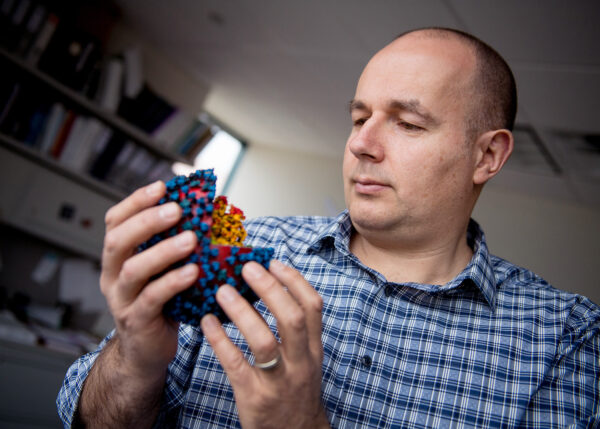
Richard Webby, PhD, is a member of the Infectious Diseases department at St. Jude. He began his career in New Zealand, where he earned his undergraduate and doctoral degrees. He joined St. Jude in 1999, and in 2008, he was named director of the World Health Organization Collaborating Center for Studies on the Ecology of Influenza Viruses in Lower Animals and Birds at St. Jude.
His research focuses on the understanding and reduction of the impact of influenza viruses that jump from animals to humans. He is also interested in the production of vaccine viruses, reagents, and technology that facilitates the rapid characterization of emerging viruses.
Dr. Webby is a fellow of the American Academy of Microbiology and Director of the National Institute of Allergy and Infectious Diseases’ Center of Excellence in Influenza Research and Surveillance, one of five such centers in the world. In 2010, he received a special recognition award from NIAID for his work during the 2009 H1N1 pandemic.
Credits
Hosted and written by Maggie Fox
Special guest: Richard Webby
Produced and edited by Samantha Serrano
Music composed and sound edited by Raquel Krügel

